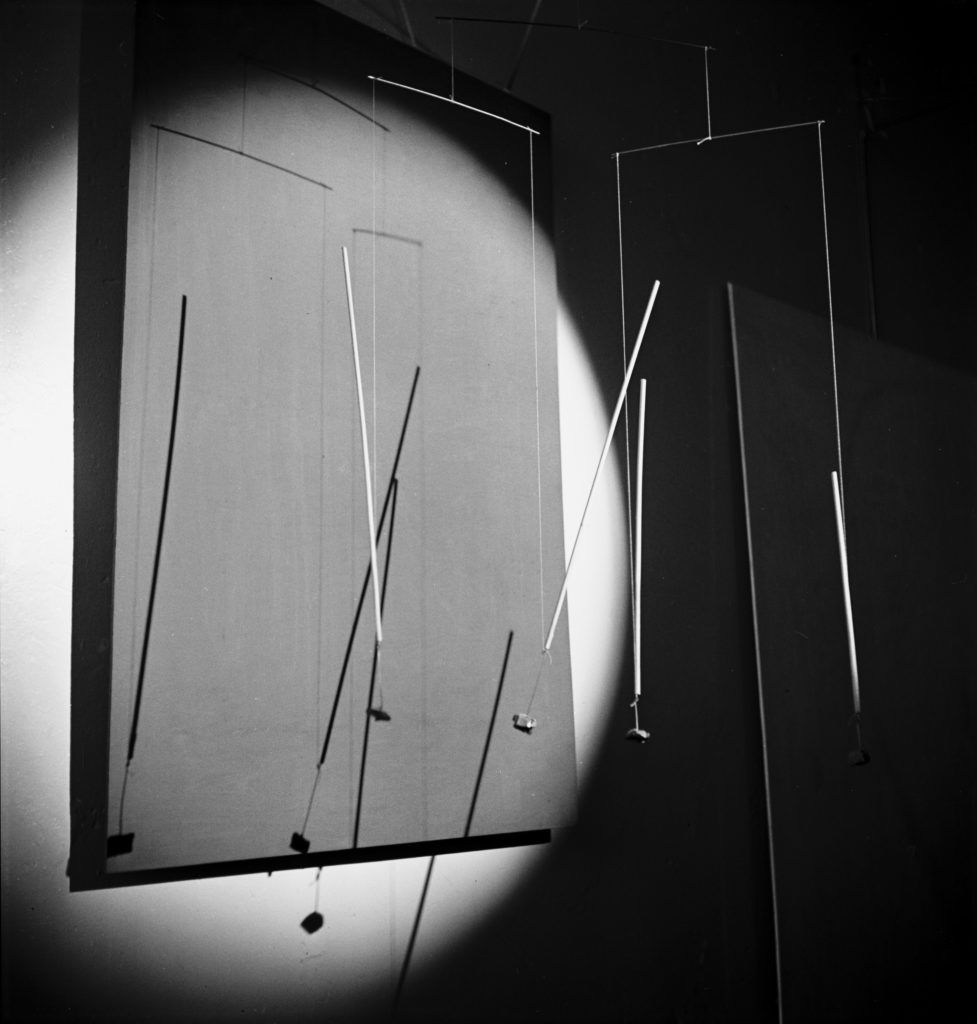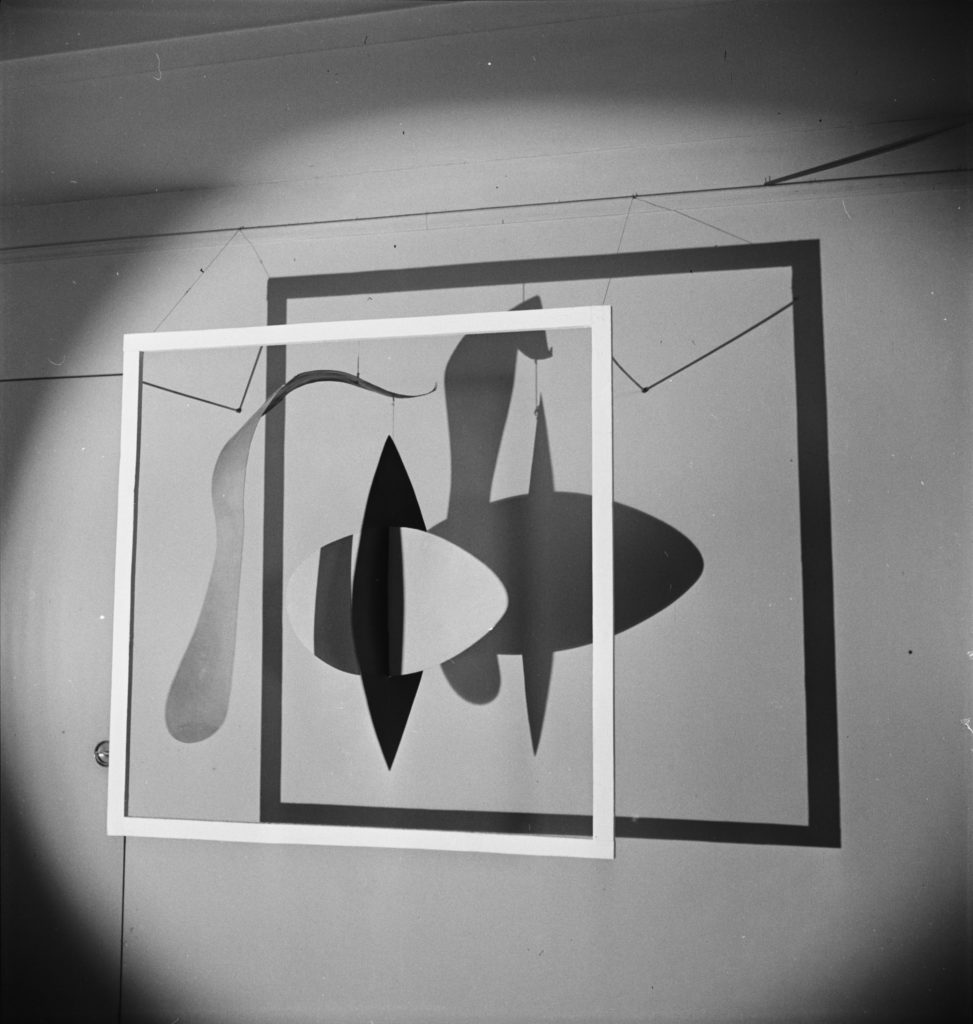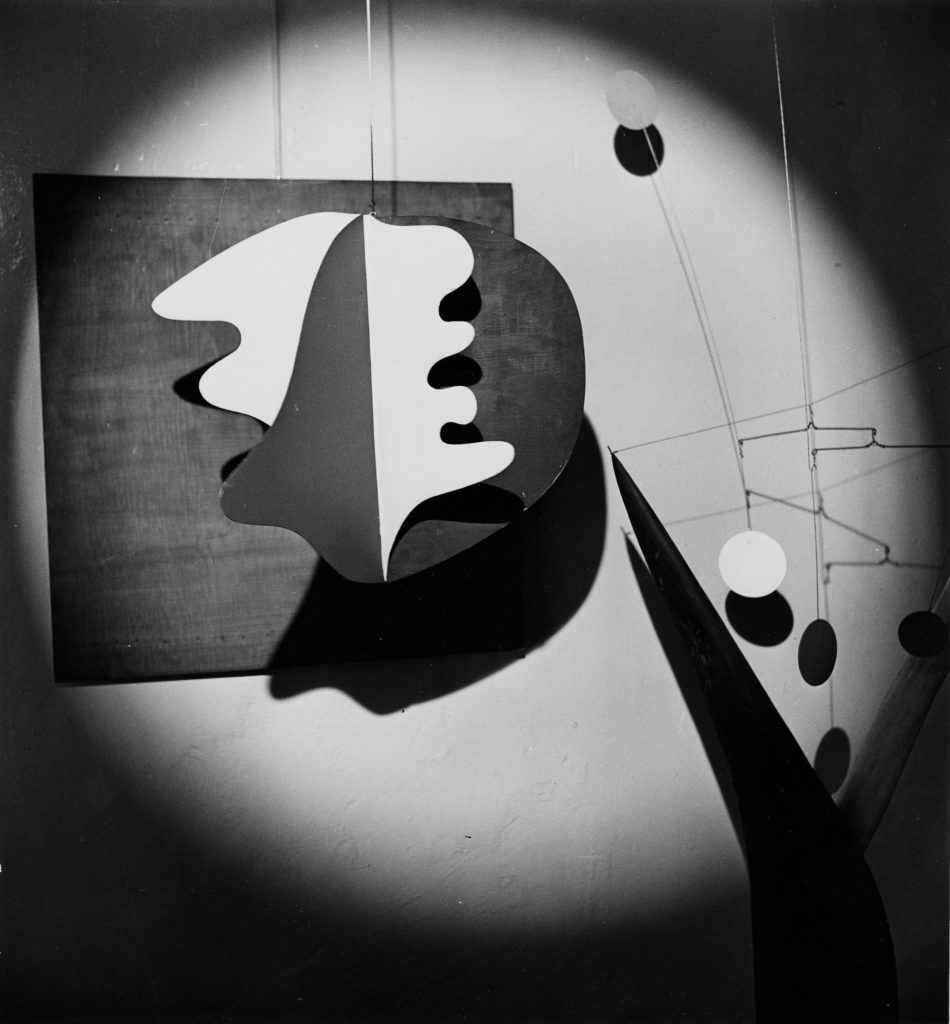Featured Text
Alexander Calder: Movement as a Plastic Element
Plus, no. 2 (February 1939).
Plus, no. 2 (February 1939).
The basis of graphic representation is a kinetic pleasure—the rhythmic gesture. The finger or pointed stick first recorded it in the sand, as chalk records the child’s gesture on city pavements today. But our satisfaction at having achieved such a record soon crowds out all conscious recollection of the pleasurable sensation which underlies it. We quickly come to feel that our pleasure in regarding such a graph derives from some quality inherent in the linear organization itself rather than from kinetic experience of which it unconsciously reminds us.



Calder in introducing actual movement into his plastic organizations has given a new emphasis to the basic rhythmic gesture. This has had the fundamental value of a primitive appeal. And, it comes with Calder’s work, at a moment when plastic expression is ripe for such a physical realization of movement.
Since the close of the Renaissance the trend in plastic design has been away from the suggestion of fixity to one of mobility. The closed, symmetrical form has given way to an open asymmetrical one. The mathematical conventions of a strict perspective-approach have yielded slowly to a free, harmonic ordering of the picture-surface primarily dependent on the individual artist’s sensibility. The single fixed viewpoint dominating the geometrical landscaping of a Lenotre was seen gradually to have resolved itself through Langley, Brown and Repton to a multiplicity of viewpoints that grew out of the wandering paths of late continental versions of “English” and “Chinese” gardens. While in architecture, as early as Schinkel and Nash, the formalistic stage-set character of the Baroque was turning to a free organic development of the building from within, on the basis of living requirements and in keeping with the demands of the natural surroundings in which the building was set. In short, the trend from the close of the Renaissance to the present day has been one of a growing interest in free natural rhythms and their adaptation to plastic expression.
It was only a step further for Calder to bring back actual movement in place of the suggestions of it. And the immediacy of this stimulus carried with it a primitive strength of rhythmic evocation that is perhaps Calder’s most striking contribution. But a still more personal and perhaps more important one lies in his recognition of another feature of natural movements—their unpredictable character and the esthetic possibilities of the unexpected.
The Industrial period, which was ushered in almost contemporaneously with the Romantic Revival, provided a wealth of new materials and plastic possibilities through the development of the machine. But two factors militated against a full use of the opportunities presented. On one hand the complacency of the Victorian world led it to feel it could improve on pre-industrial period expressions with the tools and the materials of the Industrial Age. The result was an ugly parody which caused a sensitive revulsion from the machine to a pre-Raphaelite escapism. But such a retreat into the past naturally called up a protest. And shortly after the opening of the present century we had a sentimentalization of the machine.
New materials, new forms, unlimited possibilities opened up toward a new plastic idiom were clearly recognized; but the romantic adulation of the machine which was felt necessary to offset the hostility of the previous generation made an honest plastic approach, for the time, next to impossible.




It was here that Calder’s recognition of the potentialities of the surprise-factor in free rhythms and his ingenious, yet unaffected use of it served at once as a tonic and purge. The critics of the Romantic movement had been attracted to the unpredictable features of nature and had rediscovered through them the esthetic of the unexpected. Calder in adapting the natural rhythms also recognized the dramatic value of the surprise element. And his extremely personal use of it has probably done more than anything else toward combatting the fustian seriousness and lack of sense of humor that grew out of the sentimentalization of the machine, and toward laying a sound foundation for a new machine age idiom.
And in Calder’s work these are by no means recent developments. Throughout, we see both these features constantly present: on one hand, the movement-through-space, as clearly represented by his tiny Aesop illustrations as by the skywriting of an airplane; on the other, a readiness to accept a hint from the nature of the material itself toward an unexpected rhythm or effect, now a tree root that becomes a curiously distorted representation of a cow, now a figure drawing that takes on an unfamiliarity from his use of an unbroken line. In his wire caricatures we see a similar approach to that of the Aesop illustrations. And in the later mobiles the unexpected rhythmic turn may again be derived directly from nature in a puff of wind that tosses the arms of the object, or from a mechanical rhythm produced by some twist in a wire or idiosyncrasy of the material.
In Calder’s mobiles we have the tonic which clears away the sentimental approach to the machine, and lays a new stress on the rhythmic fundament of design through a physical representation of movement.
Calder, Alexander. “A Water Ballet.” Theatre Arts Monthly, vol. 23, no. 8 (August 1939).
MagazineMasson, André. “L’Atelier d’Alexander Calder.” Handwritten poem, 1942. Calder Foundation, New York.
Unpublished Document or ManuscriptCalder, Alexander. “À Propos of Measuring a Mobile.” Manuscript, 1943. Agnes Rindge Claflin papers concerning Alexander Calder, 1936-circa 1970s. Archives of American Art, Smithsonian Institution.
Unpublished Document or ManuscriptAddison Gallery of American Art, Andover, Massachusetts. 17 Mobiles by Alexander Calder. Exhibition catalogue. 1943.
Alexander Calder, Statement
Solo Exhibition CatalogueIn 1937, Calder completed Devil Fish, his first stabile enlarged from a model. He received two important commissions: Mercury Fountain (1937) and Lobster Trap and Fish Tail (1939). His first retrospective was held in 1938 at the George Walter Vincent Smith Gallery in Springfield, Massachusetts, followed by another in 1943 at the Museum of Modern Art in New York.